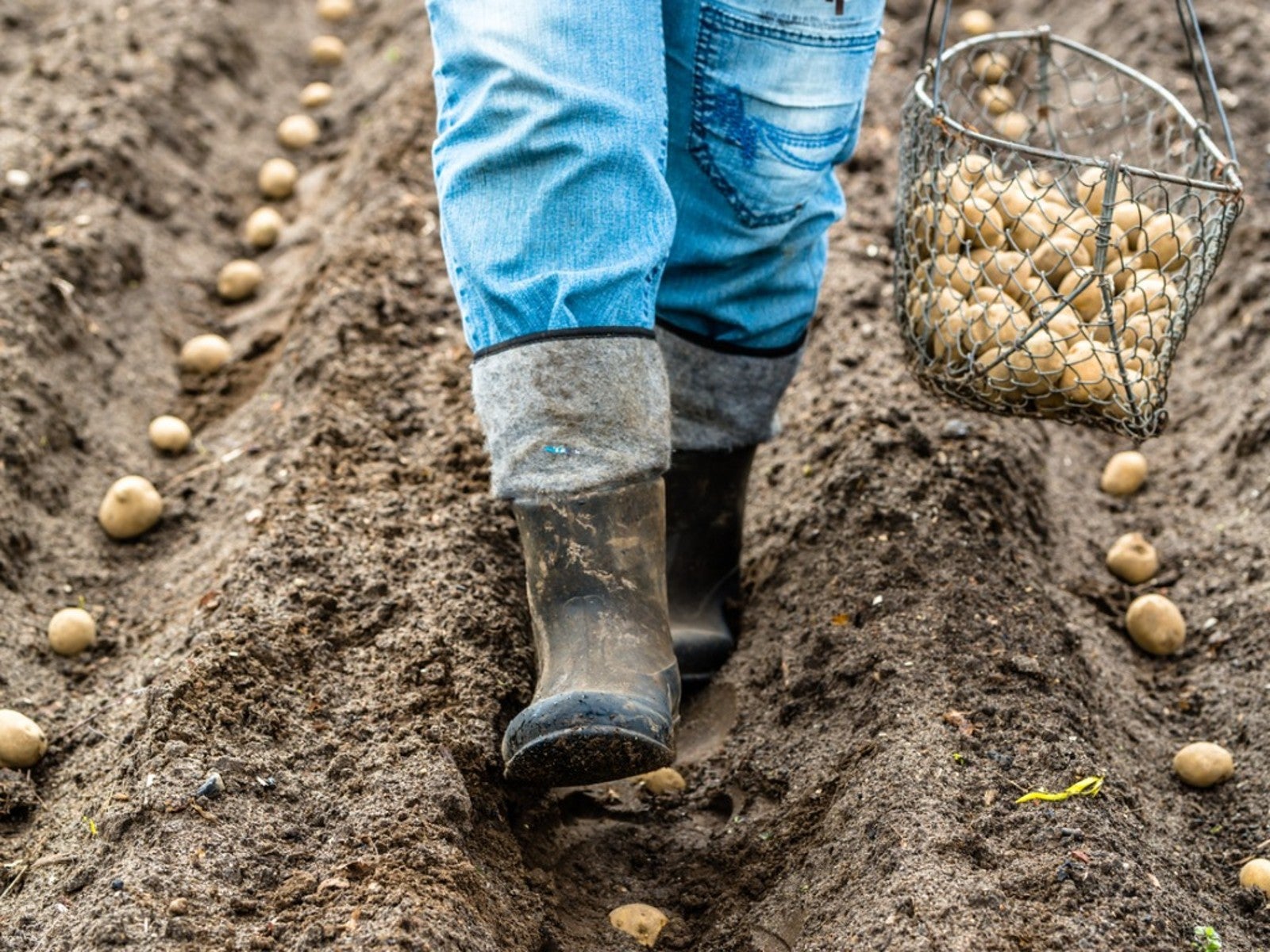Grow Potatoes In Fall For A Late Harvest


Many cuisines feature potatoes, a starchy tuber that lends itself to a host of dishes. Growing your own potatoes ensures an organic supply of these long lasting spuds. Growing potatoes in fall is often preferable in areas with hot summers, as they are a cool season crop. Wondering how late can you plant potatoes? The answer depends on your growing zone.
Potato tubers develop best at temperatures of 60-70 Fahrenheit (15-21 C.).
They grow well in early spring and late fall when temperatures aren't too hot. There are early, midseason, and late varieties. Select a late variety for optimal production in fall cropping situations.
When to Plant Fall Potatoes
Late potatoes work well for winter storage. The best time to plant these varieties is about 110 days before the first expected freeze, which may be as early as July in some regions. Tuber formation will slow or stop when soil temperature reaches 80 degrees Fahrenheit (26.7 C.). Planting fall potatoes often results in a larger crop than early or midseason varieties and their starch content is higher.
Loose loamy to sandy soil is preferred for potato crops. Potatoes may also be grown in containers, and there are many available for purchase or you can make your own.
Growing Late Season Potatoes
Selecting the correct variety of tuber will ensure the maximum crop. Varieties that perform well in the fall are:
- Butte- Brown skinned, starchy
- Desiree- Rosy skin, yellow flesh
- Genesee- Classic white potato
- German Butterball- creamy yellow flesh
- Katahdin- Long storing white potato
- Snowden- Small white, perfect for potato chips
- Russet Burbank- Large classic russet with dry, mealy flesh
- Red Pontiac- Large tubers with red skin and white, waxy flesh
- Lehigh- Yellow potato with firm flesh
- Kennebec- Large brown skinned tuber
- Elba- Solid, white, round potatoes
- Bintje- Long storing yellow spud
- All Blue- Deeply purple red skin and flesh
- French Fingerling- Long, narrow tubers
- Irish Cobbler- Heirloom medium potatoes
- Pink Fir Apple- Rosy fingerling with yellow flesh
- Green Mountain- Classic baking potato
- Amarosa- Pink inside and out, fingerling
Tips on Growing Potatoes
Potatoes don't need much encouragement to grow. Select firm seedling potatoes. The bag should have a blue tag on it that signifies the potatoes passed inspection.
Sign up for the Gardening Know How newsletter today and receive a free copy of our e-book "How to Grow Delicious Tomatoes".
Cut each seeding potato into pieces. A medium sized potato should be cut in 4 pieces, while a large spud needs to be separated into 6 pieces. Ensure each piece has at least 1 eye or growing node. After cutting the potatoes, store the pieces in a warm, humid place to allow the cut edges to heal.
Plant each piece in prepared soil 12 inches (30.48 cm.) apart. Cover the pieces with 4 inches (10.16 cm) of soil. As you see plant leaves, hill the soil to encourage the formation of roots and more tubers. Keep the site evenly watered. Young tubers can be gently harvested at any point. When the plant dies back it is time to take the whole harvest. Let the spuds sit in a shady place for a day to toughen the skin and store at 40 degrees Fahrenheit (4.4 C.).

Bonnie Grant is a professional landscaper with a Certification in Urban Gardening. She has been gardening and writing for 15 years. A former professional chef, she has a passion for edible landscaping.